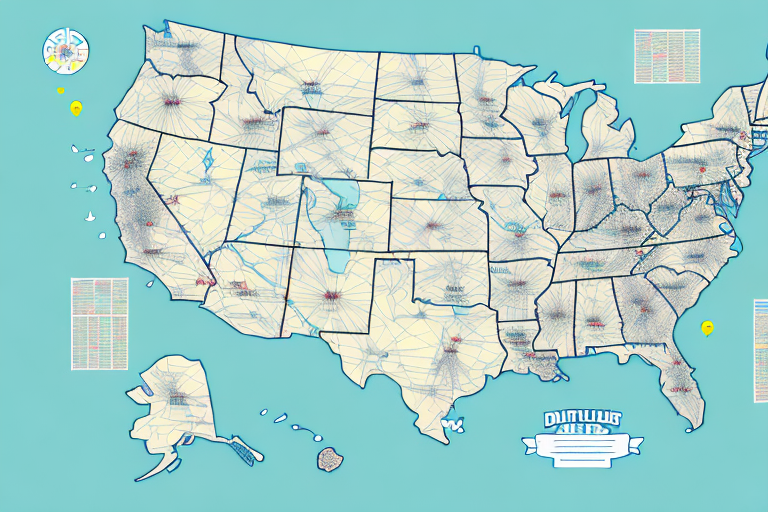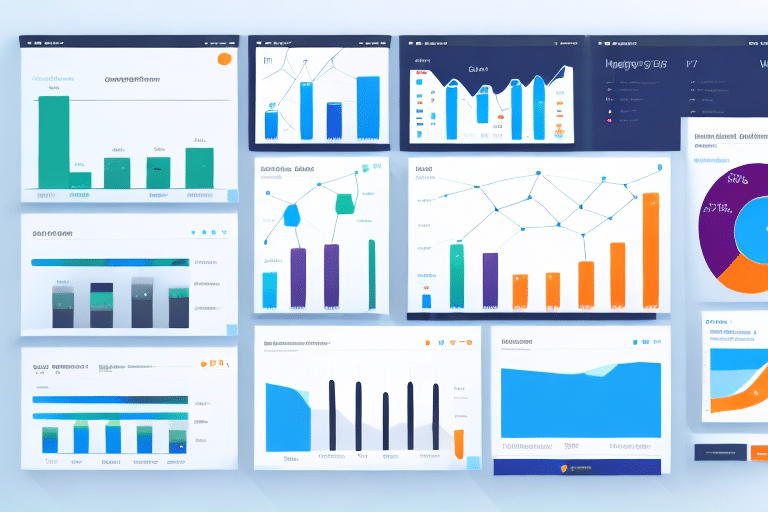Why Delivery Route Optimization Matters
Delivery is a critical component of any business operation, directly impacting customer satisfaction and overall profitability. Optimizing your delivery route involves strategically planning the paths your drivers take to ensure maximum efficiency. This process considers various factors such as traffic patterns, weather conditions, and customer availability to minimize costs and enhance service quality.
Effective route optimization can lead to significant reductions in fuel consumption and operational costs. According to a study by the Environmental Protection Agency (EPA), optimizing delivery routes can reduce fuel usage by up to 20%, resulting in lower emissions and a smaller carbon footprint.
Moreover, optimized routes contribute to higher customer satisfaction by ensuring timely deliveries and reliable service. This reliability fosters customer loyalty and can lead to increased repeat business and positive word-of-mouth referrals.
Assessing Your Delivery Route Optimization Needs
Understanding Your Delivery Process
To optimize your delivery routes effectively, it's essential to thoroughly understand your current delivery process. Identify key factors such as package sizes, delivery time windows, traffic patterns, and driver capabilities. Analyzing these elements helps in creating a realistic and efficient route plan.
Vehicle Considerations
The type of vehicle you use plays a significant role in route optimization. Factors such as vehicle capacity, fuel efficiency, and special features like liftgates or refrigeration units can influence the effectiveness of your delivery routes. Selecting the right vehicle for your deliveries can enhance efficiency and reduce operational costs.
Customer Needs and Preferences
Taking into account customer preferences, such as preferred delivery times or special handling requirements for fragile items, is crucial. Meeting these needs not only improves customer satisfaction but also ensures that deliveries are made smoothly and without complications.
Benefits of Optimizing Your Delivery Route
- Increased Productivity and Efficiency: Streamlined routes enable drivers to complete more deliveries in less time.
- Cost Reduction: Minimizing fuel consumption and vehicle wear and tear leads to significant savings.
- Enhanced Customer Satisfaction: Reliable and timely deliveries improve customer trust and loyalty.
- Environmental Impact: Reduced fuel usage lowers your carbon footprint, contributing to sustainability.
- Scalability: Efficient routes make it easier to scale operations as your business grows.
Additionally, optimized routes provide better visibility and control over your delivery operations, allowing for real-time adjustments and improvements.
Tools and Technologies for Delivery Route Optimization
Delivery Management Software
Implementing advanced delivery management software can revolutionize how you plan, execute, and monitor your deliveries. These tools offer real-time tracking, automated scheduling, and comprehensive reporting features that enhance overall efficiency.
Mapping and Routing Software
Utilizing mapping and routing software allows you to create the most efficient routes by analyzing various factors such as traffic conditions, road closures, and distance. These tools often include features like dynamic rerouting based on real-time data.
Telematics and GPS Tracking
Telematics devices and GPS tracking systems provide valuable insights into your fleet's performance and driver behavior. By monitoring speed, idling times, and route adherence, you can make informed decisions to optimize routes and improve safety.
Data Analytics Tools
Leveraging data analytics tools helps in gathering and analyzing delivery data. These tools can identify patterns, track key performance indicators (KPIs), and highlight areas for improvement, enabling continuous optimization of your delivery processes.
Analyzing and Evaluating Your Current Delivery Process
Key Metrics to Track
- Delivery Time and Accuracy: Measure the time taken to complete deliveries and the accuracy of order fulfillment.
- Vehicle Utilization and Mileage: Assess how effectively your vehicles are being used and track total mileage.
- Fuel Consumption and Costs: Monitor fuel usage to identify opportunities for cost savings.
- Driver Productivity and Safety: Evaluate driver performance and ensure adherence to safety protocols.
- Customer Feedback and Satisfaction: Collect and analyze customer feedback to gauge satisfaction levels.
By systematically tracking these metrics, you can identify bottlenecks and inefficiencies within your delivery process, paving the way for targeted improvements.
Technology Assessment
Evaluate the current technology and tools you use in your delivery operations. Are your systems up-to-date and capable of supporting efficient route planning? Investing in modern technologies can streamline operations and enhance overall efficiency.
Planning and Implementing Your Delivery Route Optimization
Factors to Consider
- Customer Location and Demand: Prioritize deliveries based on customer locations and demand patterns.
- Traffic Patterns and Road Conditions: Analyze historical traffic data to avoid congestion and delays.
- Driver Availability and Skills: Assign routes based on driver expertise and availability.
- Vehicle Capacity and Features: Match the right vehicle to the delivery requirements.
- Delivery Time Windows: Schedule deliveries within the specified time frames to meet customer expectations.
- Last-Mile Logistics and Safety: Ensure safe and efficient last-mile delivery practices.
Effective Strategies
- Group deliveries by geographic proximity to minimize travel distance.
- Implement dynamic routing that adapts to real-time traffic and delivery conditions.
- Train drivers on efficient driving techniques to reduce fuel consumption and improve safety.
- Collaborate with other businesses or logistics providers to share resources and optimize routes.
Best Practices and Common Mistakes
- Best Practices: Communicate changes clearly, provide adequate training, thoroughly test plans, monitor progress, and remain flexible.
- Common Mistakes: Focusing only on short-term gains, ignoring customer preferences, over-relying on technology, overloading drivers, and neglecting regular evaluations.
Adhering to these best practices while avoiding common pitfalls ensures a smooth and effective implementation of your route optimization plan.
Leveraging Technology for Optimization
Technology is at the heart of effective delivery route optimization. Advanced tools such as GPS tracking and navigation systems, automated dispatch and scheduling software, IoT sensors, and cloud-based data platforms are essential for streamlining operations.
These technologies enable real-time monitoring of deliveries, automated adjustments to routes based on current conditions, and comprehensive data analysis for continuous improvement. Investing in the right technology not only enhances efficiency but also provides a competitive edge in the logistics industry.
Measuring Success and Continuous Improvement
Key Performance Indicators (KPIs)
- Delivery Time and Accuracy: Assess how well you meet delivery deadlines and order accuracy.
- Cost Savings and Revenue Growth: Track reductions in operational costs and increases in revenue.
- Driver Productivity and Satisfaction: Monitor driver performance and job satisfaction levels.
- Customer Feedback and Retention: Analyze customer reviews and retention rates to gauge satisfaction.
- Environmental Impact: Measure reductions in fuel consumption and emissions.
By regularly evaluating these metrics, you can identify areas for further improvement and ensure that your route optimization efforts continue to deliver positive results. Continuous monitoring and adaptation are key to maintaining and enhancing delivery efficiency over time.
Case Studies: Real-World Examples
- Amazon: Utilizes dynamic routing algorithms and predictive modeling for efficient last-mile deliveries, enhancing speed and reliability.
- UPS: Employs telematics and data analytics to monitor fleet performance and optimize routes based on real-time information.
- Zara: Operates a high-tech distribution center capable of processing millions of garments daily, reducing lead times and increasing responsiveness.
These case studies highlight the significant benefits that delivery route optimization can offer across various industries, demonstrating its critical role in modern logistics management.
Final Thoughts
Optimizing your delivery route is an ongoing process that requires continuous analysis, adaptation, and improvement. By leveraging the right tools, adhering to best practices, and staying informed about the latest industry trends, you can achieve maximum efficiency, reduce costs, and enhance customer satisfaction. Embrace route optimization as a fundamental aspect of your business strategy to drive success and stay competitive in the ever-evolving logistics landscape.








